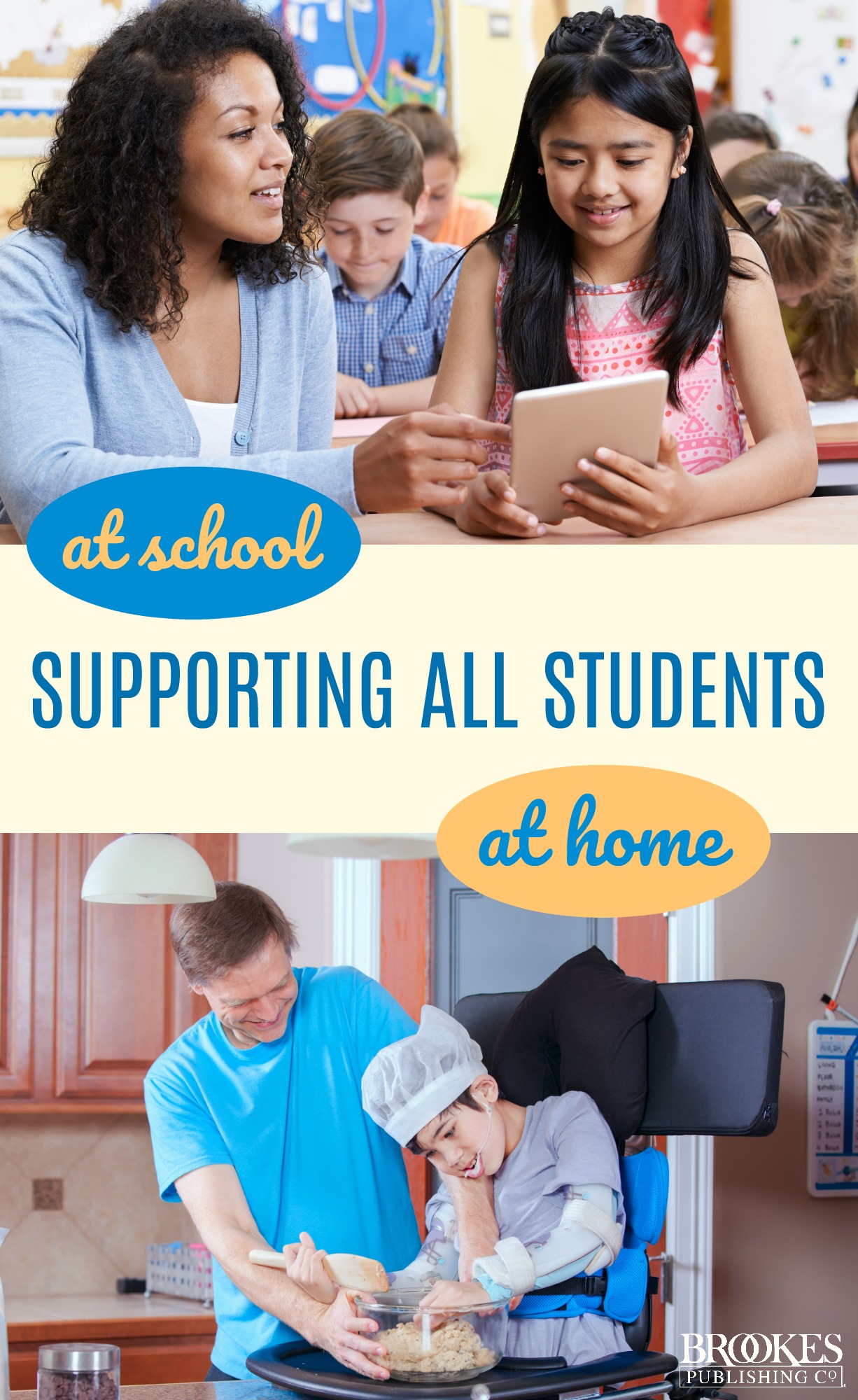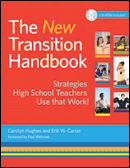14 Ways to Support All Learners at School and Home
August 8, 2017
When it comes to supporting all students in an inclusive classroom, you can never have too many practical tips in your toolbox. Today’s post, adapted from The New Transition Handbook by Carolyn Hughes & Erik Carter, gives you 14 helpful suggestions for meeting the needs of all learners—during the school day and at home. Recommended by real teachers, these strategies will help you strengthen inclusive practices and help families provide the best supports for their children.

Teachers surveyed by authors Hughes & Carter recommended the following instructional strategies for supporting students in inclusive classrooms:
- Encourage active learning. Hands-on activities are often the best way to get all students engaged in learning. Whenever you can, assign your students small-group and project-based assignments that promote active and collaborative learning. (If you have students work in small groups, they may need some initial guidance on how to work well together.)
- Give students choices whenever you can. Some students like to tackle challenging tasks first, while others might prefer to start simple and then ease into tougher tasks. Let students choose which activities to complete first. Giving them some control over their schedule shows that you respect each student’s individuality, strengths, and needs.
- Provide models. Modeling is a powerful teaching tool—when students see a new skill in action, it can help them learn that skill faster and more accurately. Look for opportunities to weave modeling into your lessons. You can model skills yourself, but don’t forget the power of peer modeling, too. Give students with disabilities plenty of chances to work directly with their classmates and watch them model important academic and social skills.
- Apply proven strategies. Investigate what works by reading about the latest research-based strategies for inclusive classrooms. (We’ve got a whole bookstore category for that.) If you haven’t already, try strategies like constant and progressive time delay, most-to-least or least-to-most prompting, and other direct instruction strategies backed by strong evidence of effectiveness. Always match the strategies you choose with the individual needs and strengths of your students.
- Boost participation. Give all students lots of opportunities to respond in class, and many different ways to participate. Not only does this get every student more actively engaged with your lesson, it also increases the amount of positive reinforcement they’ll receive. Allow students with different strengths and needs to respond in different ways, such as speaking instead of writing and vice versa.
- Rethink grading. For students who have extensive support needs, traditional grading systems probably won’t be the best way to show what they can do. Consider alternative grading approaches that more meaningfully capture the progress students with disabilities are making toward their academic goals. (For guidance on grading, see this excellent post from Nicole Eredics of the Inclusive Class blog: “10 Tips for Grading Students with Disabilities in the Inclusive Classroom.”)
- Teach students self-management. Equipping students with the skills they need to manage their own performance is a useful way to keep them on track and learning. You might need to use several different forms of communication when teaching students to manage their own behavior and learning. For example, a student who doesn’t speak or read might use picture prompts to learn self-management skills. For other students, a written list carried in their wallets or backpacks may work better. You might also consider using a reward system that gives students points for steps toward increased independence. Be flexible and creative, and adapt self-management strategies to your students’ needs and preferred forms of communication.
- Reinforce skills valued by families. Which skills does your student’s family want to reinforce? Talk with parents and other family members to find out which skills they value and would like you to encourage through practice in the classroom.

Outside the classroom, kids should have plenty of chances to practice new skills across a variety of settings, tasks, and people. Parents, extended family members, and other adults can keep these teacher-recommended strategies in mind when supporting students at home and in the community.
- Build in practice time. Be sure to give your child lots of opportunities to practice new skills throughout the day and in different settings. This will help him or her master those skills more quickly and use them whenever they’re needed.
- Say yes to activities. Look for ways to increase your child’s involvement in extracurricular and community activities. The more your child participates in opportunities like these—whether they’re sports, plays, dance classes, day camps, science clubs, or another preferred activity—the more chances they’ll have to practice and refine important skills.
- Use your child’s interests as teaching tools. Does your child have a special fascination? Weaving these preferences and interests into skill instruction can help promote learning and engagement. (For specific ideas on using a child’s fascinations as powerful learning aids, see Just Give Him the Whale! by Paula Kluth & Patrick Schwarz.)
- Make modifications. Why make learning a new task harder than it needs to be? As you teach new skills, consider ways to modify some of the steps so your child can learn and maintain a new skill more easily. For example, if you’re teaching a child to cook, color-coding the kitchen tools can help him select the appropriate ones for each step.
- Reinforce new skills. For children to maintain a new skill successfully, they need reinforcers—a positive, motivating thing they get as a consequence of performing the skill. For example, if you’re teaching your child to use a vending machine, make sure you let her complete the whole activity and get the reinforcement at the end (the snack or drink).
- Teach skills your child will really use. Generic skills like sorting objects into groups aren’t likely to be used much in a child’s daily life. Focus instead on skills that are functional, useful, and reinforced regularly within your child’s everyday schedule. For example, if you teach your child to order from a table at a sit-down restaurant but your family orders mostly takeout from drive-through windows, then your child won’t have many opportunities to reinforce the skill of ordering from a table. Teach her the process of ordering from a drive-through, and she’ll have many more chances to practice and master the skill.
As an educator or parent, which of these strategies resonates with you most? Do you have another key principle of inclusion that guides you every day? Share it with us in the comments below!
CHECK OUT THE BOOK

For more than 500 research-based, teacher-tested strategies that help students with disabilities make a smooth transition to adulthood, check out The New Transition Handbook. Read an excerpt, see the reviews, and view the full table of contents.




Write a Comment
Your email address will not be published. Required fields are marked *
comments
Eshal Fatima says
I really like your post admin. Thanks for sharing.
Post a Comment